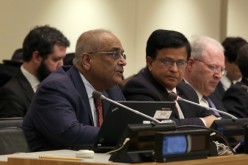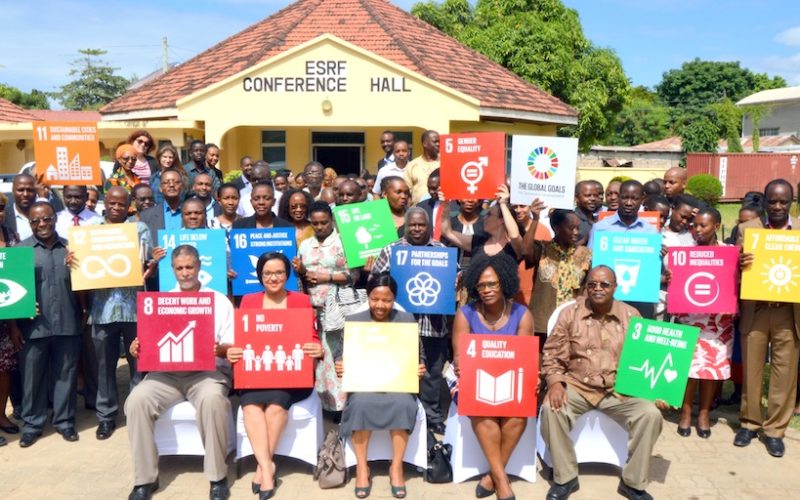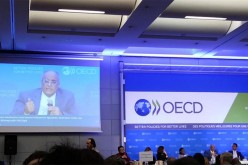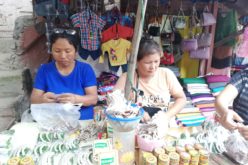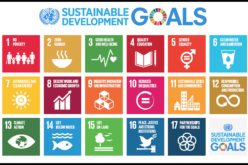The following blog post has been prepared by Economic and Social Research Foundation (ESRF), Tanzania. For more information on the Stakeholders’ Brainstorming Workshop on SDG Implementation in Tanzania, please click here.
By Dr. Tausi Kida and Desmond Mushi
The UN Sustainable Development Summit, which took place on 25-27 September 2015 in New York, unanimously adopted the Agenda 2030 for Sustainable Development with a view towards “transforming our world” alongside paving a sustainable and resilient pathway for it. The 17 Sustainable Development Goals (SDGs) and its 169 targets were announced at the Summit. Since the adoption of the goals, Tanzania has been in the process of mainstreaming the SDGs into its national policy frameworks, which include the national development plan and monitoring and evaluation systems.
On 25 May 2016, the Economic and Social Research Foundation (ESRF), in collaboration with the Ministry of Finance, Poverty Eradication Division, and with support from UNDP, coordinated a brainstorming workshop to discuss the implementation of SDGs in Tanzania. The workshop was a continuation of ESRF’s previous involvement in the formulation and implementation of the post-2015 agenda since 2012 – the ESRF is a member of the network viz. Southern Voice on Post-MDG International Development Goals, which addresses the existing ’knowledge asymmetry‘ in the global debates and ’participation deficit’ of the developing countries by generating evidence-based knowledge, sharing policy experiences originating in the Global South, and disseminating this knowledge and experience among key stakeholders.
Between 2012 and 2013, ESRF coordinated 7 zonal workshops, which were aimed at collecting views from various stakeholders, and prepared a synthesis report that identified 11 priority development areas that Tanzanians wanted to see in the new global agenda. In addition, ESRF coordinated 4 workshops addressing implementation issues in the context of post-2015 localisation. Recently, the Foundation, in collaboration with the Ministry of Finance and Planning, Poverty Eradication Division, prepared four frameworks on implementing SDGs in Tanzania, which are:
- A framework of Research Agenda on SDGs in Tanzania;
- A framework of localisation of SDGs in Tanzania;
- A framework of communication and dissemination strategy on SDGs in Tanzania; and
- A framework on Monitoring and Evaluation of SDGs in Tanzania.
Rationale for the brainstorming workshop
Tanzania’s planning horizon coincided with the end of the Millennium Development Goals (MDGs)/start of the Sustainable Development Goals (SDGs) and the workshop created a space for representatives of various stakeholder groups (government and non-governmental organisations) to brainstorm the implementation of the post-2015 agenda in Tanzania. Inclusive and participatory dialogue can contribute towards overcoming the challenges associated with the implementation of the agenda by generating a greater diversity of ideas and potential solutions and by channelling expectations of stakeholders into dynamic and constructive pathways (and possible partnerships).

Tausi Kida, Executive Director of ESRF offering opening remarks
The workshop, which combined participatory tools with technical presentations and plenary discussions to facilitate a deepened understanding of the SDGs, comprised representatives of the civil society, government, academia, private sector and youth organisations. Speakers for the workshop included Anna Mwasha, Director, Poverty Eradication Division, Ministry of Finance and Planning, who represented the Permanent Secretary, Ministry of Finance and Planning; Awa Dabo, Country Director, UNDP Tanzania Country Office; and Tausi Kida, Executive Director, ESRF.
Key issues from the presentations and discussions
A Framework of Research Agenda on SDGs in Tanzania
Tanzania’s national research agenda was developed before the firming up of the SDGs, and as such, it is important to reflect on the extent to which the research agenda accommodates research on SDGs. This is because research can and must play a key role in supporting the monitoring and implementation of SDGs: research will allow for evidence-based policy and decision making and will be instrumental in reporting progress and resolving trade-offs on cross-cutting issues, and other issues that might not be covered by the national data system (surveys and routine data).
With regard to research, participants agreed that the interconnectedness, linkages, complementarities amongst the goals and targets are salient featured of the SDGs, and it is important to ensure that research themes and programmes carry through the new approach with perhaps a more inter- and multidisciplinary nature.
A Framework of Localisation of SDGs in Tanzania
SDGs are not a very fine agenda but reflect a global consensus of high aspiration, based on a fine political balance. The goals have to be implemented through country-led initiatives instead of a global scheme, as seen in case of the MDGs.

Participants at the workshop following the discussion
A concrete SDG localisation process must be participatory, consultative and interactive in nature; targets and indicators need to be adapted to the Tanzanian context and aligned with community-level planning, prioritisation and decision making, as this is the foundation for long-lasting ownership. In addition, the localisation process is to integrate the SDGs not only into national strategies, the local government’s development plans and monitoring frameworks – but also into strategic frameworks of, inter alia, NGOs, traditional development partners, faith-based organisations and private companies.
Participants underscored the need to identify and develop a strategic approach for implementing cross-cutting issues, since the Agenda 2030 encourages different sectors to work together due to its highly interconnected nature, making it challenging to implement the agenda in isolation.
A Framework for SDG Communication Strategy
The goals must be translated into Swahili, which is crucial to ensure equal access of people in Tanzania to the content of the new agenda. Also, incorporating the SDGs into the national primary school curriculum using students to communicate aspects of SDGs with the communities, will make children agents of change and form an important component of the communication of the SDGs. In fact, some participants pointed out a similar initiative in the past that had been very successful in Tanzania owing to this approach.
A successful communication strategy is one that brings about behavioural change in individuals, households, and communities. Owing to the broad nature of the ambitions in SDGs, participants stressed the need for individual stewardship (better living) in achieving the goals and targets set by the Agenda 2030.
A Framework on Monitoring and Evaluation of SDGs
It is important for Tanzania to understand the existing national data collection system and the gaps that exist in terms the capacity to capture SDG implementation in terms of knowledge, tools, and instruments which include financing. Also, since the SDGs emphasise the quality of service delivery, it is imperative to identify ways in which monitoring and evaluation of the quality of indicators will take place, alongside identifying the responsible institutions which are to take part in this process. Also, because of the interlinking nature of SDG goals and targets, Tanzania must reflect on how best to monitor such goals and targets. Some participants suggested that research can help the monitoring process and fill the gaps that cannot be tended to by the national monitoring and evaluation masterplan.
In addition, participants recommended that the data generated to monitor progress on SDGs be disaggregated by region, gender and age. This is important in ensuring that “nobody is left behind”.
Conclusion and way forward
Throughout different discussions, the participants agreed that localisation could be achieved if we translate the SDGs into the Tanzanian context and make them widely available and accessible and if we incorporate the SDGs into national development planning and monitoring systems. Also, participants agreed that Tanzania should use “back casting” techniques to paint a clear picture of the desired future, based on sustainability principles, and create and develop platforms for interdisciplinary exchange in the research sphere.
The next step should involve the mapping of the SDGs with corresponding ambitions and interventions in the FYDP II as well as the EAC’s Vision 2030 and African Union’s Agenda 2063 for the purpose of better coordination and identifying the gap between SDGs and the development plans that have/are to be undertaken by the Government of Tanzania. This will help stakeholders understand the degree of “integrate-ability”, which is necessary during the implementation process. In addition, the Government of Tanzania needs to analyse the capacity gap in terms of skill set and tools that local government authorities need to better implement and monitor SDGs.
6,555 total views, 1 views today
Related Articles

Debapriya Bhattacharya calls for stronger accountability and legitimacy process in SDG implementation for Countries with Special Needs at UNESCAP, Bangkok
